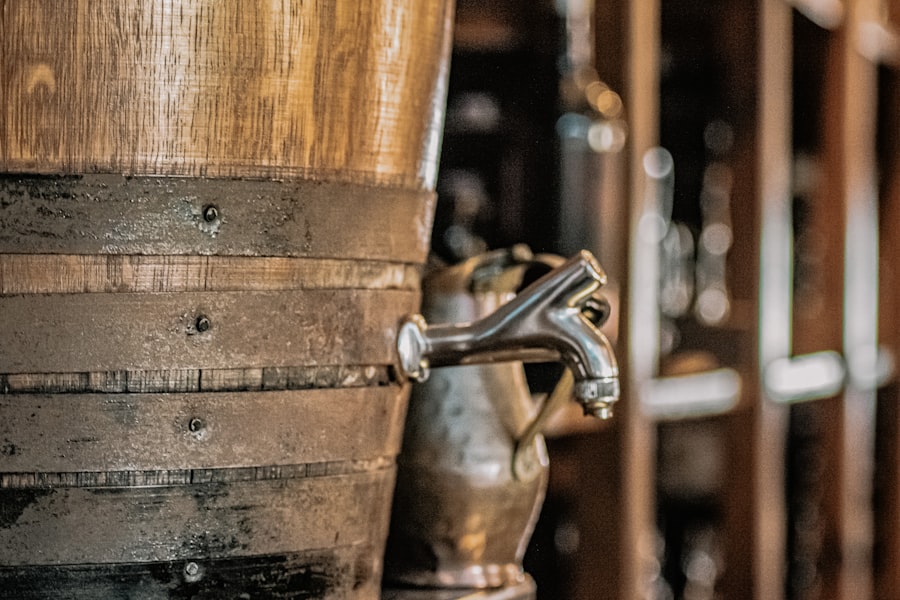Addressing leaky faucets and pipes is a crucial aspect of home maintenance that should not be overlooked. These seemingly minor issues can lead to significant problems if left unattended. A leaky faucet, for instance, may seem innocuous, but it can waste a considerable amount of water over time, leading to higher utility bills and unnecessary strain on the household budget.
Moreover, persistent leaks can cause damage to the surrounding areas, including cabinets, walls, and flooring, resulting in costly repairs. Therefore, fixing these leaks promptly is essential not only for financial reasons but also for maintaining the integrity of the home. In addition to the immediate financial implications, there are broader consequences associated with neglecting leaky faucets and pipes.
Water is a precious resource, and its wastage contributes to larger environmental issues. By addressing leaks quickly, homeowners can play a part in conserving water and reducing their overall environmental footprint. Furthermore, fixing leaks can enhance the comfort of a home by preventing mold growth and maintaining proper humidity levels.
Thus, the importance of fixing leaky faucets and pipes extends beyond mere aesthetics or cost; it encompasses financial prudence, environmental responsibility, and overall home health.
Key Takeaways
- Fixing leaky faucets and pipes is important to prevent water waste and save money on water bills.
- Leaky faucets and pipes contribute to water waste by dripping and leaking water continuously.
- Finding and identifying leaks in your home can be done by checking for water stains, mold, and listening for dripping sounds.
- DIY methods for fixing leaky faucets and pipes include replacing washers, O-rings, and tightening connections.
- Call a professional plumber when leaks are beyond your DIY capabilities or if you notice a sudden increase in water bills.
How Leaky Faucets and Pipes Contribute to Water Waste
Leaky faucets and pipes are notorious for their role in contributing to water waste. A single dripping faucet can waste gallons of water each day, adding up to thousands of gallons over the course of a year. This waste not only affects the homeowner’s water bill but also places an unnecessary burden on local water supplies.
In regions where water scarcity is a pressing issue, such waste can exacerbate existing challenges and hinder conservation efforts. The cumulative effect of numerous households experiencing similar leaks can lead to significant environmental degradation. Moreover, the impact of leaky pipes extends beyond just the immediate household.
When water leaks from pipes underground, it can lead to soil erosion and damage to infrastructure. This not only affects the environment but can also result in costly repairs for municipalities tasked with maintaining public water systems. The hidden nature of many leaks makes them particularly insidious; they can go unnoticed for long periods while still contributing to substantial water loss.
Therefore, understanding how leaky faucets and pipes contribute to water waste is essential for fostering a culture of conservation and responsible water use.
Finding and Identifying Leaks in Your Home

Identifying leaks within a home can be a challenging task, especially since many leaks occur in hidden areas such as behind walls or beneath floors. Homeowners should be vigilant in monitoring their water usage and looking for signs of leaks. One effective method is to check the water meter before and after a period of non-use; if the meter continues to run, it may indicate a leak somewhere in the system.
Additionally, homeowners should be on the lookout for visible signs such as water stains on ceilings or walls, damp spots on floors, or an increase in mold growth. Another useful technique for identifying leaks is to inspect fixtures and appliances regularly. Faucets, showerheads, toilets, and washing machines are common culprits when it comes to leaks.
Homeowners should pay attention to any dripping sounds or unusual moisture around these areas. In some cases, using food coloring in toilet tanks can help identify leaks; if the color seeps into the bowl without flushing, it indicates a leak in the flapper valve. By being proactive in finding and identifying leaks, homeowners can take timely action to mitigate water waste and prevent further damage.
DIY Methods for Fixing Leaky Faucets and Pipes
| Method | Effectiveness | Cost | Difficulty |
|---|---|---|---|
| Tightening connections | High | Low | Easy |
| Replacing washers | Medium | Low | Medium |
| Using pipe tape | High | Low | Easy |
| Applying sealant | Medium | Low | Medium |
For those who are handy around the house, there are several DIY methods available for fixing leaky faucets and pipes. One of the most common fixes involves replacing worn-out washers or O-rings in faucets. These small components can wear down over time due to constant use, leading to leaks.
By turning off the water supply, disassembling the faucet, and replacing these parts, homeowners can often resolve the issue without needing professional assistance. In addition to faucet repairs, homeowners can also tackle minor pipe leaks using plumbing tape or epoxy putty. For small pinhole leaks in pipes, wrapping the affected area with plumbing tape can provide a temporary fix until a more permanent solution is implemented.
Similarly, epoxy putty can be molded around the leak to create a seal that prevents further water loss. While these DIY methods can be effective for minor issues, it is essential for homeowners to recognize their limits; more complex plumbing problems may require professional intervention.
When to Call a Professional Plumber
While many minor leaks can be addressed through DIY methods, there are situations where calling a professional plumber is necessary. If a leak is extensive or located in hard-to-reach areas such as behind walls or under floors, it may require specialized tools and expertise to repair effectively. Additionally, if a homeowner notices signs of significant water damage or mold growth, it is crucial to seek professional help immediately to prevent further complications.
Another scenario that warrants professional assistance is when multiple leaks are present throughout the home. This could indicate underlying issues with the plumbing system that require a thorough inspection and repair by an experienced plumber. Furthermore, if a homeowner feels uncertain about their ability to fix a leak safely or effectively, it is always wise to err on the side of caution and consult with a professional.
Ultimately, knowing when to call in an expert can save time, money, and potential headaches down the line.
The Environmental Impact of Water Waste

Water Scarcity and Climate Change
As global populations continue to grow, climate change exacerbates drought conditions in many regions, making conserving water increasingly critical. Leaky faucets and pipes contribute significantly to this issue by wasting millions of gallons of water each year across households worldwide.
Consequences of Water Waste
This not only depletes local water supplies but also increases energy consumption associated with water treatment and distribution. Moreover, excessive water waste can lead to ecological imbalances in local ecosystems. Aquatic habitats may suffer as rivers and lakes experience reduced water levels due to over-extraction from municipal systems.
Taking Action to Mitigate Environmental Impacts
Additionally, groundwater supplies may become depleted faster than they can be replenished, leading to long-term consequences for both human populations and wildlife alike. By addressing leaks promptly and promoting responsible water use practices, individuals can contribute positively toward mitigating these environmental impacts.
Tips for Preventing Leaks in the Future
Preventing leaks before they occur is an essential aspect of responsible homeownership. Regular maintenance checks on plumbing fixtures and appliances can help identify potential issues before they escalate into significant problems. Homeowners should consider scheduling annual inspections with a qualified plumber who can assess the condition of pipes and fixtures throughout the home.
In addition to regular inspections, homeowners can take proactive measures such as insulating pipes during colder months to prevent freezing and cracking. Using high-quality materials during renovations or repairs can also reduce the likelihood of future leaks. Furthermore, educating family members about proper usage of plumbing fixtures—such as avoiding excessive force when turning faucets on or off—can help prolong their lifespan and prevent wear that leads to leaks.
Taking Action to Conserve Water in Your Home
Taking action to conserve water within the home involves more than just fixing leaks; it requires a comprehensive approach that includes adopting sustainable practices throughout daily routines. Homeowners can start by installing low-flow fixtures such as showerheads and faucets that reduce water consumption without sacrificing performance. Additionally, using appliances like dishwashers and washing machines only when full can significantly decrease overall water usage.
Another effective strategy is implementing rainwater harvesting systems that collect rainwater for irrigation purposes or other non-potable uses around the home. This not only conserves municipal water supplies but also reduces stormwater runoff that can contribute to pollution in local waterways. By fostering a culture of conservation within their households—through education, awareness campaigns, and practical changes—homeowners can make meaningful contributions toward preserving this vital resource for future generations.
In conclusion, addressing leaky faucets and pipes is an essential responsibility for homeowners that carries significant implications for both personal finances and environmental sustainability. By understanding the importance of fixing these issues promptly, identifying potential leaks early on, employing DIY methods when appropriate, knowing when to call professionals, and taking proactive steps toward prevention and conservation, individuals can play an active role in promoting responsible water use within their homes and communities.
If you are dealing with leaky faucets or pipes in your home, you may want to consider checking out this article on black vinyl windows, the trending choice for modern homes. This article discusses the benefits and aesthetic appeal of black vinyl windows, which can help enhance the overall look and functionality of your home. By making small upgrades like replacing leaky faucets and installing stylish windows, you can create a more comfortable and visually appealing living space.
FAQs
What are the common causes of leaky faucets or pipes?
Common causes of leaky faucets or pipes include worn out washers, O-rings, or seals, corrosion, high water pressure, and loose or damaged pipe fittings.
How can I fix a leaky faucet or pipe?
To fix a leaky faucet, you can try replacing the worn out washers, O-rings, or seals. For leaky pipes, you may need to tighten loose fittings, replace damaged sections, or call a professional plumber for more complex issues.
Why is it important to fix leaky faucets or pipes?
Fixing leaky faucets or pipes is important to prevent water wastage, water damage to your property, and potential mold growth. It also helps to conserve water and reduce your water bill.
Can leaky faucets or pipes cause water damage?
Yes, leaky faucets or pipes can cause water damage to your property, including walls, floors, and ceilings. This can lead to costly repairs and potential health hazards from mold growth.
How can I prevent leaky faucets or pipes?
To prevent leaky faucets or pipes, you can regularly inspect and maintain your plumbing fixtures, avoid using excessive water pressure, and address any leaks promptly. It’s also important to use high-quality plumbing materials and professional installation.






